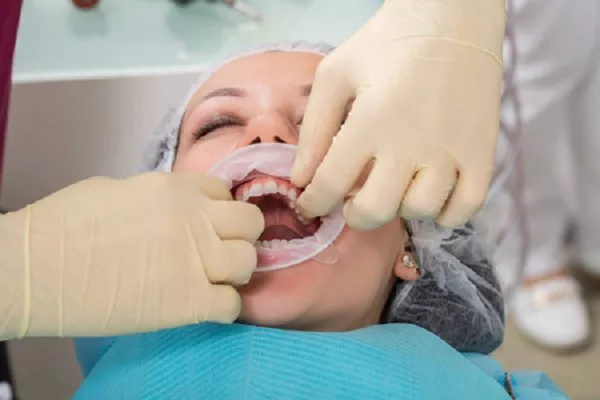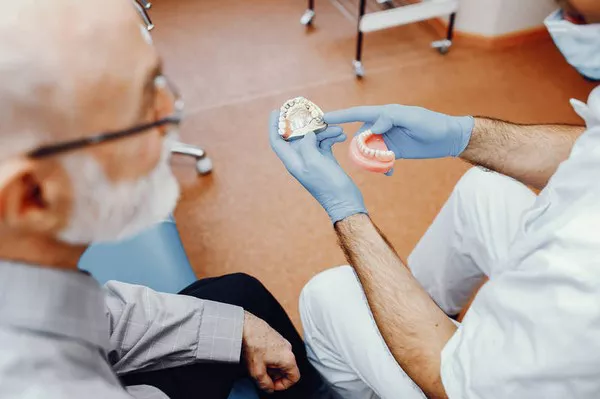Dental bonding is a popular cosmetic dentistry procedure used to enhance the appearance of teeth by correcting imperfections such as discoloration, chips, gaps, and irregular shapes. While dental bonding is effective in restoring teeth to their natural beauty, it’s essential to understand its limitations when it comes to teeth whitening. In this comprehensive guide, we will delve into the details of dental bonding, its susceptibility to staining, and the options available for whitening teeth with bonding.
Understanding Dental Bonding
Dental bonding is a non-invasive cosmetic procedure that involves applying a tooth-colored composite resin material to the tooth’s surface. This resin is carefully shaped and bonded to the tooth using a special light. The process allows dentists to:
Repair Chipped or Cracked Teeth: Bonding can restore teeth with minor chips or cracks, making them appear whole and healthy.
Close Gaps: Dental bonding can be used to close small gaps or spaces between teeth, improving the overall appearance of the smile.
Modify Tooth Shape: Bonding can reshape teeth that are misshapen or have irregular contours, creating a more harmonious smile.
Conceal Discoloration: Bonding can cover stained or discolored teeth, effectively hiding the blemishes and restoring a natural look.
Protect Exposed Tooth Roots: In some cases, bonding is used to cover and protect tooth roots that have become exposed due to gum recession.
Dental bonding is a versatile and cost-effective solution for many cosmetic dental concerns. However, there are certain considerations to keep in mind when it comes to its susceptibility to staining and its compatibility with teeth whitening.
Susceptibility of Dental Bonding to Staining
Dental bonding is a durable and stain-resistant material, but it is not entirely impervious to discoloration. Several factors can contribute to staining or discoloration of bonded teeth:
Consumption of Stain-Causing Substances: Bonding materials, like natural tooth enamel, can absorb pigments from foods and beverages. Coffee, tea, red wine, and tobacco products are common culprits.
Inadequate Oral Hygiene: Poor oral hygiene practices can lead to plaque and tartar buildup on bonded teeth, which can trap stains and lead to discoloration.
Time and Wear: Over time, the bonding material may wear down or become porous, making it more susceptible to staining.
Darkening of Surrounding Natural Teeth: If the natural teeth surrounding the bonded tooth become stained, the contrast can make the bonded tooth appear discolored.
Whitening Dental Bonding: Is It Possible?
Teeth whitening, also known as teeth bleaching, is a common method used to lighten the shade of natural teeth. However, teeth whitening treatments typically do not affect the color of dental bonding material. Here’s why:
Composition: Dental bonding is made of composite resin material that does not respond to traditional teeth whitening agents like hydrogen peroxide or carbamide peroxide, which are effective on natural tooth enamel.
Resistance to Bleaching Agents: The bonding material is non-porous and does not readily absorb bleaching agents. This makes it challenging to change the color of bonded teeth through standard whitening procedures.
Options for Whitening Teeth with Bonding
While teeth whitening treatments may not directly affect dental bonding, there are alternative options to achieve a uniform and brighter smile:
Teeth Whitening Before Bonding: If you plan to undergo dental bonding in the future, consider whitening your natural teeth before the bonding procedure. This allows your dentist to match the bonding material to your desired tooth color. Once bonding is in place, it will not change color with teeth whitening treatments.
Replacement of Bonding: If your dental bonding has become discolored or worn down over time and you wish to whiten your smile, you may choose to have the bonding material replaced with a lighter shade. Your dentist can remove the old bonding and apply new material to match your desired tooth color.
Composite Veneers: For a more dramatic and lasting change in tooth color, consider composite veneers. These are thin shells of composite resin that can be placed over the front surface of teeth, including those with dental bonding. Composite veneers can be customized to achieve the desired shade.
Professional Cleaning: Regular dental cleanings and check-ups are essential to maintaining the appearance of bonded teeth. Professional cleanings can remove surface stains and tartar buildup, helping your bonded teeth look their best.
Conclusion
Dental bonding is a versatile and effective cosmetic dentistry option for improving the appearance of teeth. While it is stain-resistant, it may still be susceptible to discoloration over time. Teeth whitening treatments typically do not affect dental bonding, so alternative approaches arenecessary to achieve a whiter smile. Consulting with a dental professional is essential to explore the best options for maintaining or enhancing the color of teeth with dental bonding. Whether it involves replacing bonding material or considering composite veneers, your dentist can help you achieve the radiant smile you desire while preserving the integrity of your bonded teeth.
Related Topics:
































